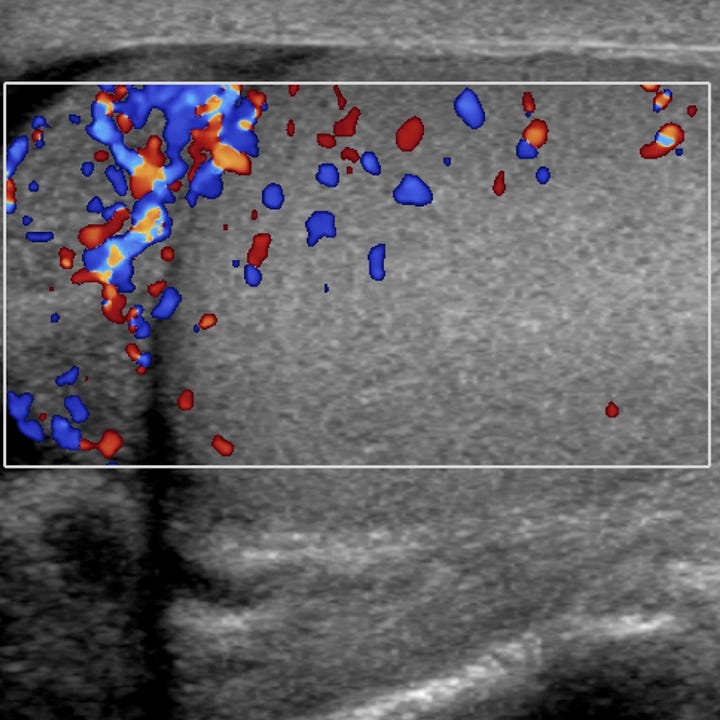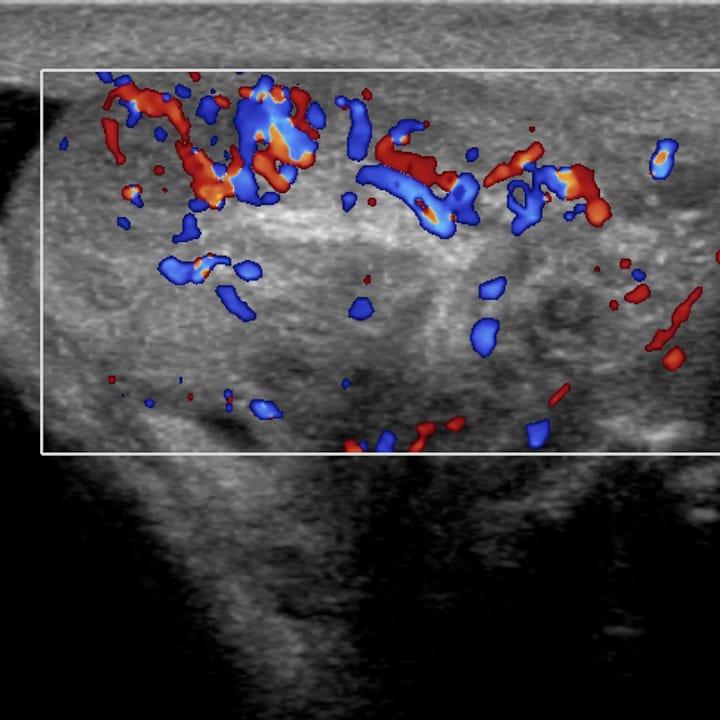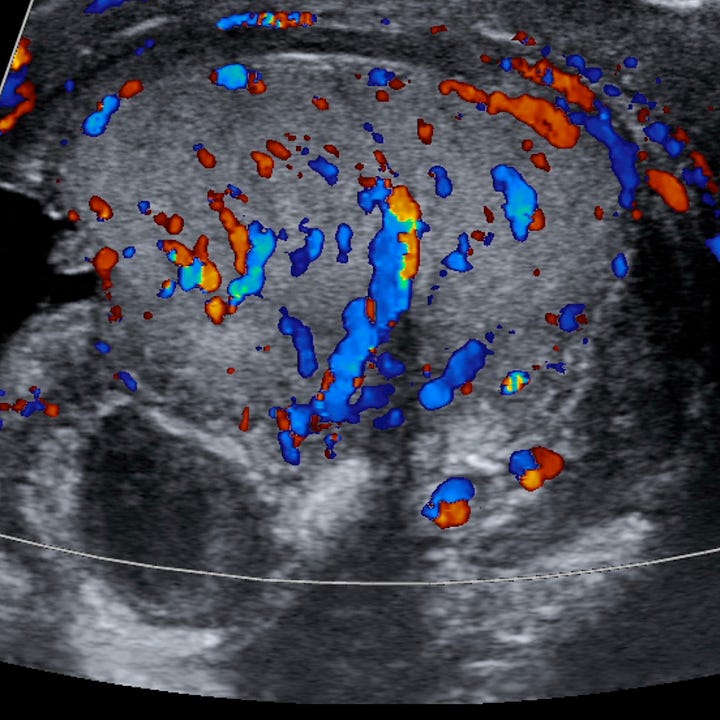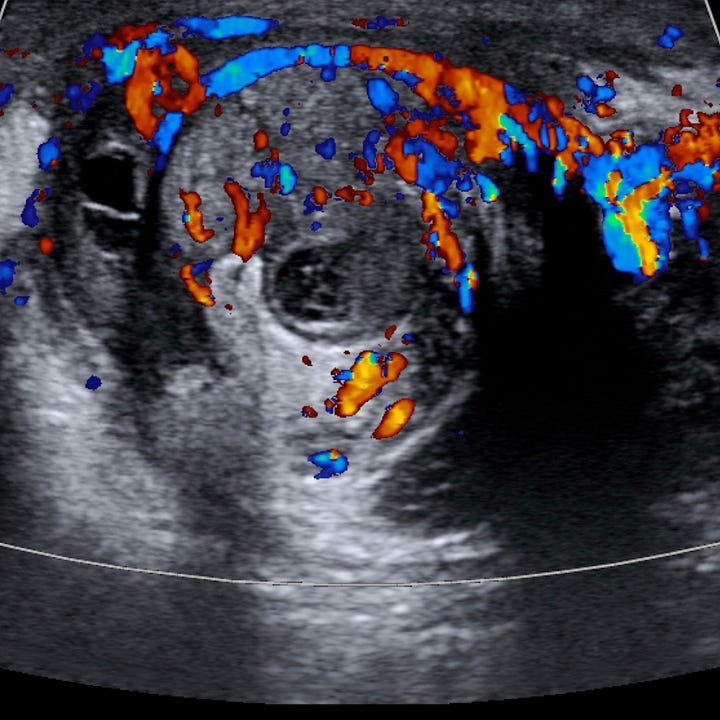

Epididymitis Increased epididymal vascular flow. Normal intra-testicular flow.
Epididymitis is a common cause of sudden-onset unilateral scrotal pain. It may be associated with testicular inflammation (epididymo-orchitis). Some patients have only mild testicular swelling and tenderness, but fever, dysuria, and urethral discharge occur in more severe cases.
Infection usually originates in the bladder or prostate gland and is transmitted via lymphatics to the epididymis and testis.Common causative organisms are Chlamydia trachomatis, Neisseria gonorrhoeae, and Escherichia coli.
Peak incidences are in the third and seventh decades, reflecting sexually transmitted infection in younger men and obstructive uropathy in older age. Pain associated with epididymitis is typically relieved when the testes are elevated over the pubis symphysis; pain associated with testicular torsion is not relieved by this maneuver.
Epididymitis is often diagnosed clinically, but ultrasound is frequently requested in the emergency setting to exclude testicular torsion. Subacute testicular pain can be seen in tumor, chronic epididymitis, and varicocele. Imaging findings include epididymal enlargement, decreased echogenicity and increased epididymal/testicular blood flow with a low resistive index.
Untreated epididymis may progress to epididymo-orchitis, scrotal abscess, or, ultimately, testicular infarction. Follow-up ultrasounds are usually indicated at 4 to 6 weeks to ensure complete resolution of the infection.


Epididymo-orchitis Increased blood flow to right testis and epididymis. ~ 1 cm fluid collection with internal echoes and increased through transmission is consistent with a small adjacent intra-scrotal abscess.

